Unlocking the success of botanical artist Wanda Comrie
It's the question we are all asking: "How does she do it?"
Whenever artists discuss how to “nail” the business side of art, sooner or later, someone mentions West Australian botanical artist Wanda Comrie. If you are reading this, you are probably one of her 91,000 Instagram followers and you may have even tried to elbow out the intense competition to buy one of her small works when they pop up on her account.
Good luck to you. They sell in a flash.
Yet, despite Wanda being the primary income earner in her household (she says that leaving her well-paid Public Service position for art was a good financial decision), you won’t find her in all the usual arty places. She doesn’t enter prizes, she doesn’t work with galleries and she is not doing the art fair circuit.
How does she do it? Showing she is also a dab hand at multitasking, Wanda sat for a chat with me while painting away in her Busselton studio.
Powered by Instagram
It was the debilitating effects of menopause that ejected Wanda from her high-stress public service job about seven years ago. She was already painting, having started with a community course some 20 years earlier, and quickly developed her “niche” of vividly-coloured oil paintings of sunshine-lit botanicals in (often) quirky vases and on patterned textiles.
Instagram shot her from obscurity, giving her a global audience almost overnight when some influential art accounts featured her.
When @thejealouscurator (Danielle Krysa), now with 472,000 followers, posted about her work overnight, Wanda woke up to 500 new followers. That growth rate continued for some time as the post stayed on the Jealous Curator page.
American pop artist @ashleylongshoreart (328,000 followers) was another early Instagram supporter: “One day, she landed in my DMs and wanted to buy five pieces. I had a little ‘heart attack’ and then she bought another larger one”.
That early experience has encouraged Wanda to “pay it forward” by sharing the work of other artists.
“I know how valuable it is for the reach and there are so many great artists we just don’t see,” she says.
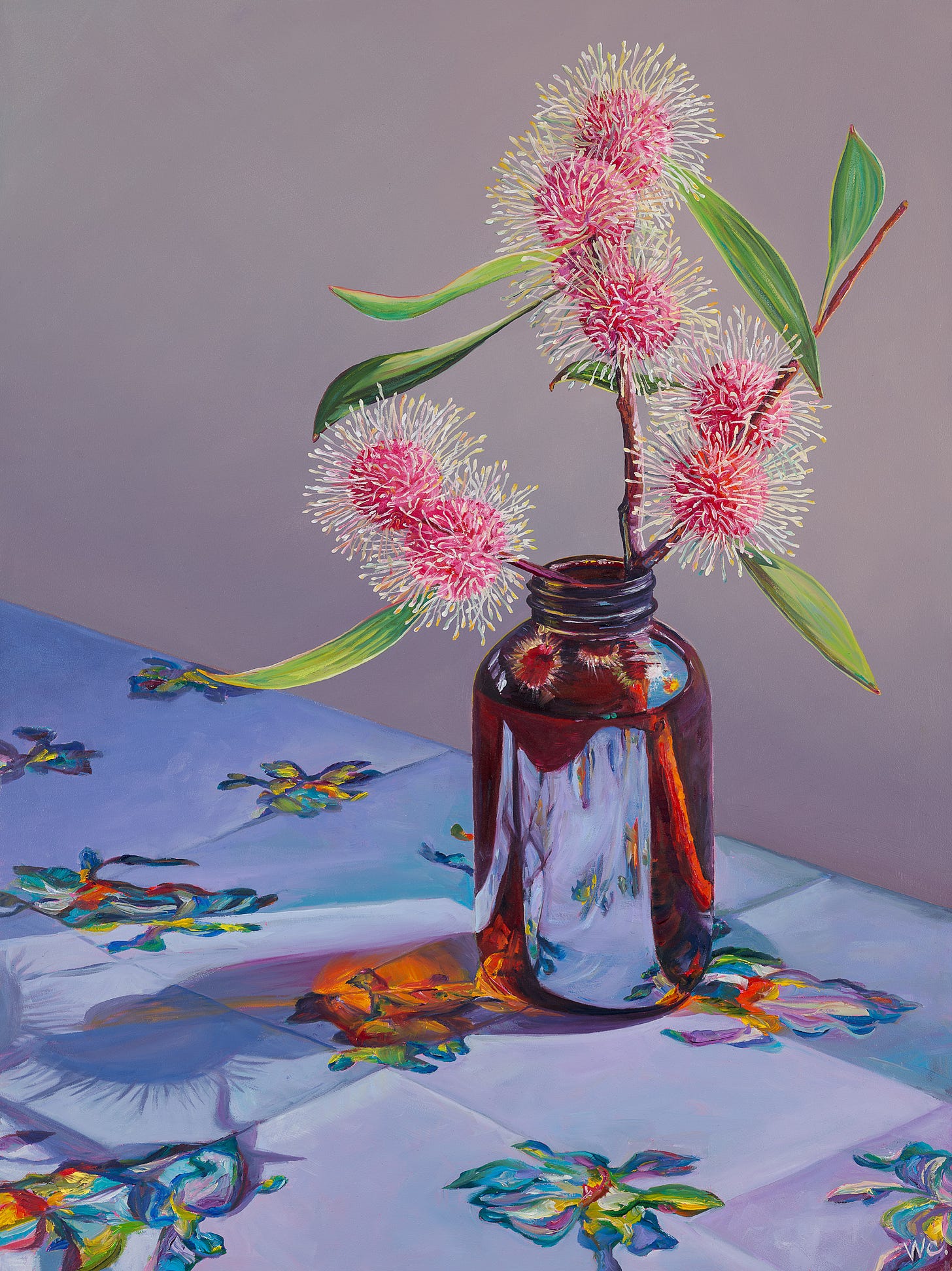
Wanda does not resent the time she spends on her account, which she started in 2015. “I enjoy it, actually, connecting with artists and peers who may do the same thing as me.
“My screen usage last week was about three hours a day.”
Despite the flak Instagram gets for making it increasingly difficult for artists to connect with an audience, Wanda remains grateful that it has allowed her to build a collector base.
“I’ve got this far and paid nothing for my marketing. It’s free. It’s amazing. My work is accessible to a lot of people worldwide, which is just not something a gallery down here in Australia would be able to offer.”
Wanda posts consistently and shares her artistic process, giving behind-the-scenes glimpses of works-in-progress and her studio.
“A lot of the content is just my life, my day, and my palette. I’m not really going out of my way to make anything fabulous.”
The shape of the business
Working five days a week, Wanda
Creates and sells more than 100 paintings per year. Some of the smallest ones can be done in a day.
Her husband, a carpenter, makes the cradled boards for her “Liddles” small works.
Has a range of limited edition prints available from her website, 10 in each edition. They sell at $320 each.
All sales come through Instagram without paid posts.
About 50 per cent of sales go overseas.
More than half of her collectors are repeat buyers.
Thinking small
While Wanda also enjoys painting larger, her “Liddles” on a cradled board (18.5 x 12 cm x 5cm) are perfectly sized for shipping through Australia Post. Her carpenter husband makes the boards, which do not require a frame, so almost all of the sale price (from $595) goes to the artist.
And, thanks to her practised hand and work ethic, some of them can be painted in a day.
Wanda’s Saturday morning job in a local art store also provides her with a free source of packaging materials, with its ready supply of used cardboard boxes and bubble wrap.
These “Liddles” have been a continuing runaway success through Instagram: “I’m very lucky that they do go pretty quickly”. Things have tapered off a little since the art-buying frenzy COVID years, but with no material difference to her sales: “During COVID, they sold in a matter of minutes. Now it’s a matter of hours”.
Could this work for you? Things to Consider:
Are you prepared to do your own marketing, selling and shipping?
Do you have the commitment to master the Instagram algorithm and content creation?
Does your work have popular appeal, or can it attract a highly engaged niche audience?
Can you produce enough saleable work to create a viable income through social media?
Changing her mind on commissions
Three years ago, Wanda told broadcaster Willy Russo that she would like to stop doing commissions, leaving her free to paint whatever she pleased. Today, however, she says she appreciates the certainty that her six-month waiting list provides.
In an ideal world, she would have 50 per cent of her output as commissions.
“It keeps the money ticking over and it is good to know I have things to do in the future, rather than going week-to-week,” she says.
“I did really resent them when I first started, but I’ve realised their positive nature in pushing me forward. I can still do the stuff I enjoy, that keeps me inspired.”
People on the waiting list pay a 25 per cent non-refundable deposit for paintings that are usually larger than the “Liddles”.
“It’s just a matter of having a conversation, usually via email or DM, and they get a fair idea of what they will get. I work from my photos and I’ll send them a few reference pics of compositions, and they’ll give me their favourite. I suggest they squint and imagine my creative license.”
Why she is a gallery skeptic
When her sales are so strong and show no signs of flagging, you would have to wonder what a gallery could do for Wanda.
Even so, she says she only recently started thinking of her art career as a business. “It was once I’d done my tax and realised I’m doing all right and that this is something that can provide for us.
“I don’t know whether it’s a good or bad thing that I think of it as a business, because there is a certain type of pressure behind that. However, I feel positive and not necessarily super successful, but I feel like I’m making a go of it.
“And I think all of that has to do with not being involved with galleries.”
Wanda says there is a place for art galleries, but it is not where she wants to be.
“They would need to show me how and when and where they were going to move my work, because I know that the foot traffic through a gallery is not close to what I get on Instagram,” she says.
When she has bought from a gallery, she has been generally unimpressed by the quality of service she has received.
“I would just like to be a valued customer. I don’t even need to be blown away by the service. I just need to be answered in a timely manner by email and be given all the relevant information that I need to know.
“When I sell a piece, there’s always a lot of direct communication. There’s an invoice, tracking, and consistent communication in how you sell anything. I don’t think I’m asking for anything unreasonable. I haven’t found that a lot of the galleries I’ve dealt with are up to scratch.”
Wanda’s Tips
Price check - Subscribe to art galleries that sell work at your level (of price and quality) to stay up to date with pricing.
Balance – Wanda works on her art business 5 days a week and keeps her Sundays for either non-art time, or plays around with paint for fun: “I intend to do something for myself, which may or may not be for sale in the end”.
Socialise – Rather than being an “art hermit”, Wanda is committed to a Saturday morning job in a local art shop. “That is good for my mental health –getting dressed, doing my hair and putting on makeup so I’m presentable. And I talk to other arty people and that’s a big effort.”
Future-proofing – She has set up her website for newsletters and has a database of people interested in her work but has not yet published anything. But if Instagram ever goes the way of Twitter (X), she has another way to reach her fan base.
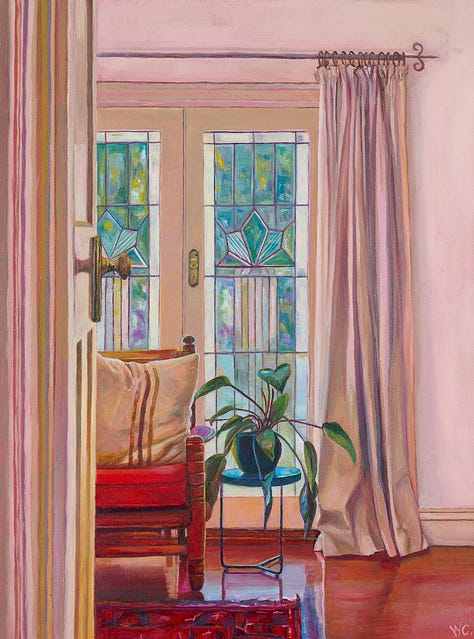

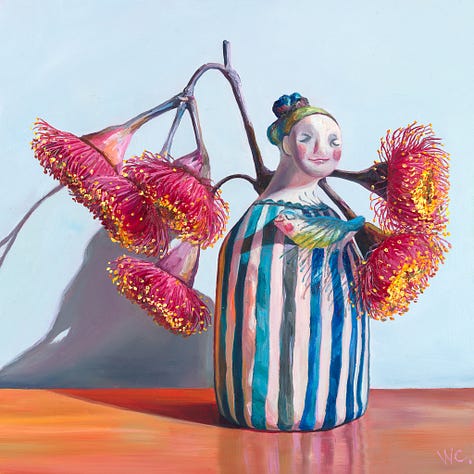
Update from Fiona
I’m back from a wonderful three weeks overseas, doing a 10-day painting workshop in Piedmont Italy with the celebrated Nicole Kelly. I can highly recommend it, if anyone is considering doing her next one.
We stayed at a Sanctuary in the untouristy Cervo Valley and received a very warm welcome from the local villagers, who really appreciated that their recently-reopened Santuario di San Giovanni d'Andorno was hosting Australian artists.
A special shout-out to the fabulous staff who worked so hard to look after us and to Nicole’s partner Lauren. I was also fortunate enough to get a personal morning tour of nearby villages by the incredibly knowledgeable Prof Richard Banati.
Please contact me with suggestions for further interviews. This newsletter will continue to be a bit irregular … but that means each one will be a gem!
Feel free to share this newsletter among your friends - the bigger the reach, the easier it is to get busy people to make time for interviews.

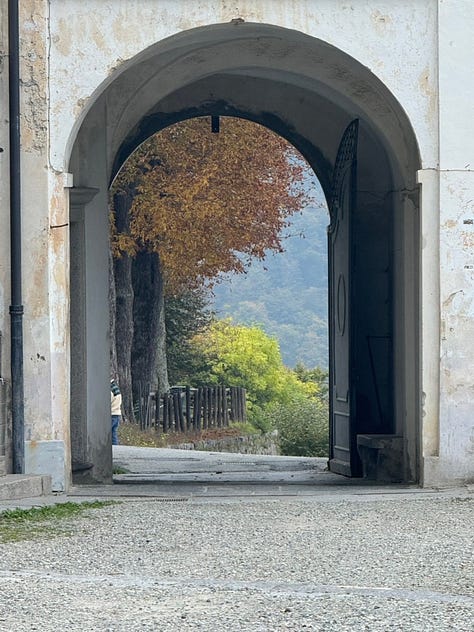
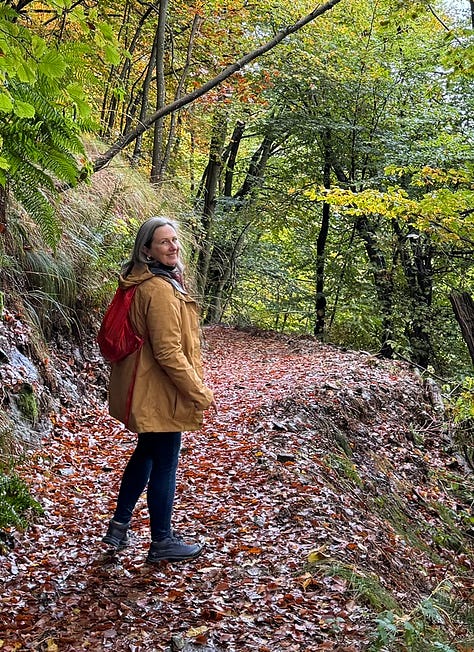
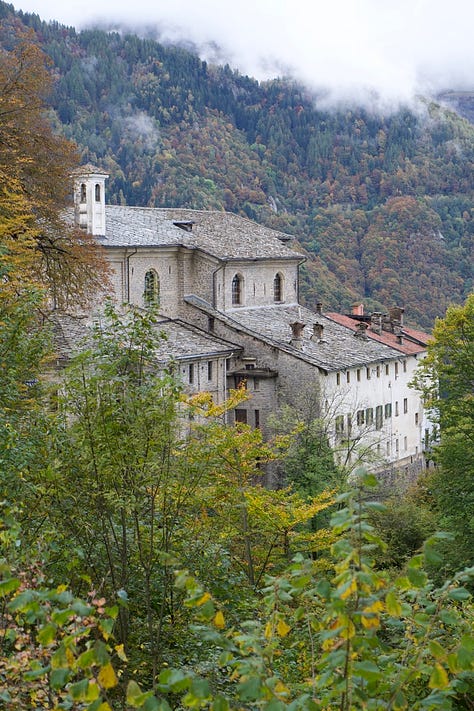
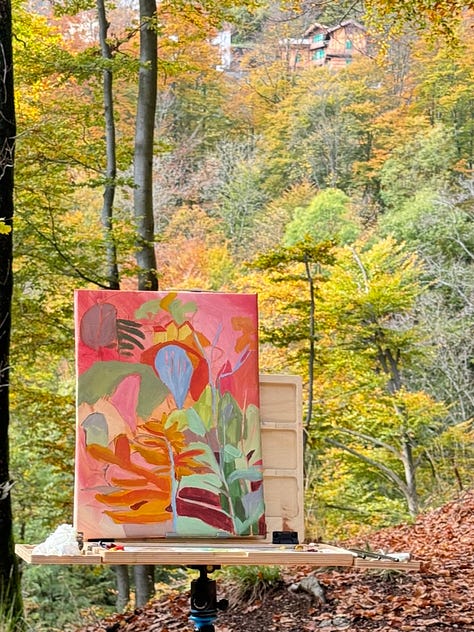
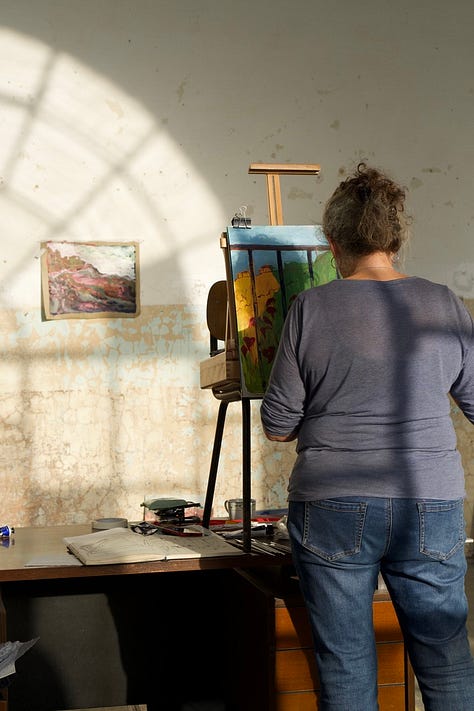





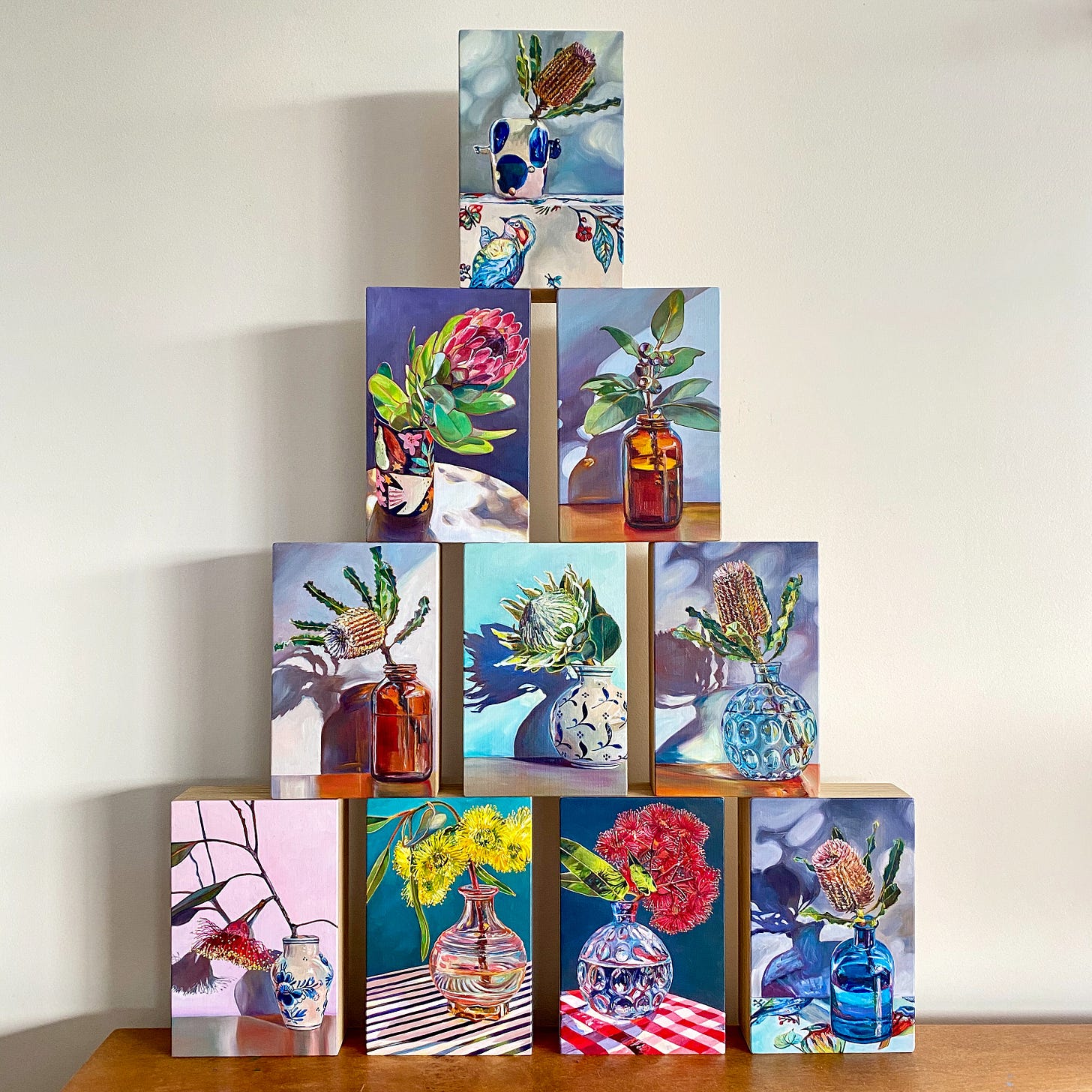
Thanks Fiona! Was a great read!